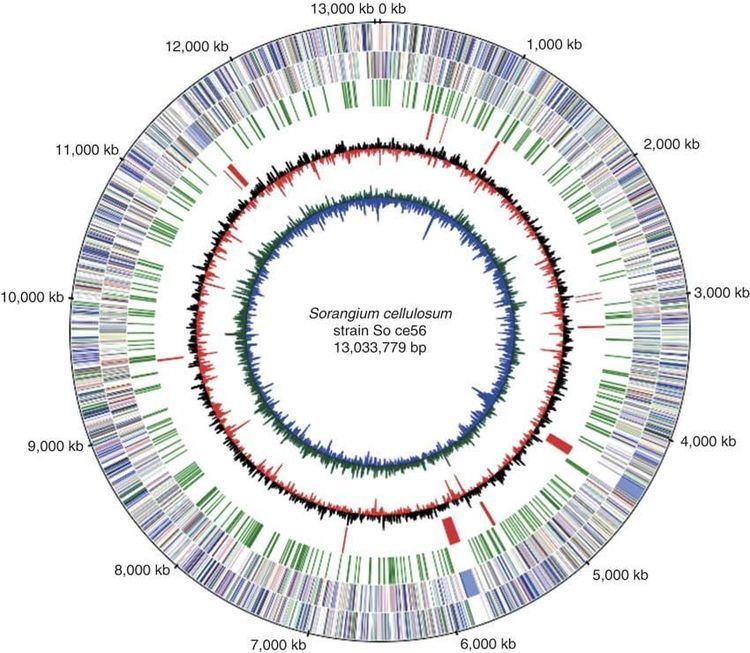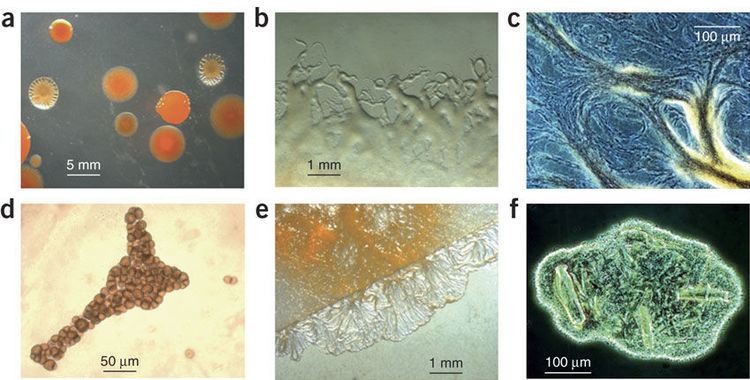Order Myxococcales Scientific name Sorangium cellulosum Rank Species | Phylum Proteobacteria Genus Sorangium Higher classification Sorangium | |
 | ||
Similar Myxobacteria, Myxococcus, Stigmatella aurantiaca, Myxococcus xanthus, Candidatus Carsonella ruddii | ||
Sorangium cellulosum is a soil-dwelling Gram-negative bacterium of the group myxobacteria. It is motile and shows gliding motility. Under stressful conditions this motility, as in other myxobacteria, the cells congregate to form fruiting bodies and differentiate into myxospores. These congregating cells make isolation of pure culture and colony counts on agar medium difficult as the bacterium spread and colonies merge. It has an unusually-large genome of 13,033,779 base pairs, making it the largest bacterial genome sequenced to date by roughly 4 Mb.
Contents

Ecology

S. cellulosum is found in soils, animal feces, and tree bark. The bacterium is a saprophyte deriving its nutrition from cellulose aerobically. It is a prolific producer of secondary fungicides and bactericides that reduce competition in soil environments. In lab samples, S. cellulosum grows on agar medium only when certain cell densities are plated. Quorum-sensing allows Sorangium to grow in communities sufficiently large to metabolize cellulose.
Secondary compounds

Sorangium produces 50% of all known metabolites produced by myxobacteria. These include compounds that are antifungal, antibacterial, antibiotic resistant, or can even disable mammalian cells. These many compounds have sparked intense mining of its extensive genome in exploration of possible industrial and medical applications. Some of these secondary compounds include:

Industrial fermentation and genetic manipulation of S. cellulosum is challenging. No plasmids have been found to replicate in S. cellulosum cells. Reproducible genetic alterations must be made directly into the chromosome.
Clinical use
Metabolites secreted by Sorangium cellulosum known as epothilones have been noted to have antineoplastic activity. This has led to the development of analogs which mimic its activity. One such analog, known as Ixabepilone is a U.S. Food and Drug Administration approved chemotherapy agent for the treatment of metastatic breast cancer.[1]
